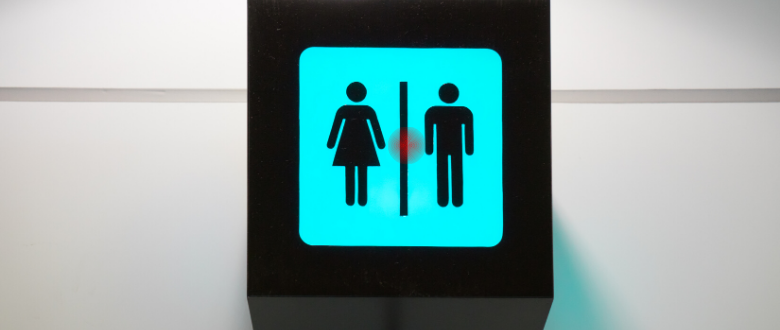Urine infections are common, particularly in women. Research indicates around 50-60% of women will experience a urinary tract infection (UTI) in their lifetime while not as many men may develop it.
What is a Urinary Tract Infection?
A urinary tract infection affects the kidneys, ureter, bladder and urethra. It usually occurs in the lower tract (the bladder and the urethra) but can also occur in the upper tract (kidneys and ureter).
A urine infection or UTI is often caused by bacteria although it could be caused by viruses or fungi.
An infection that spreads to the kidneys could become serious and potentially life-threatening.
The symptoms of a UTI in men and women are mostly the same.
How would you know you have a UTI?
The most common symptoms of a UTI are:
- Burning sensation during urination
- Cloudy or bloody urine
- Increased urgency, frequency of urination without passing much urine
- Dark coloured urine
- Foul-smelling urine
- Pelvic pain in women
- Rectal pain in men
Urine infections increase with age and frequency of sexual contact and can cause discomfort. Don’t ignore them as the infection could spread.
Urine infection in Women
UTIs are common in women because of several reasons such as:
- Female Anatomy: The urethra (the tube that carries the urine) is located closer to the anus and the vagina in a way that the bacteria from these regions can infect the urethra. Since the urethra is shorter in women than in men, the bacteria can reach the bladder more easily.
- Types of birth control such as spermicides that are inserted into the vagina may cause irritation, rashes or burning sensations and increase the risk of UTIs. Diaphragms (cap shaped contraceptives) press against the bladder, preventing it from emptying completely. The urine stored in the bladder could harbour bacteria, allowing an infection to develop.
- Sexual intercourse may also displace the bacteria from the anus into the urethra, thereby leading to an infection.Rupali Mehta, 36, scheduled a telemedicine video consultation with her gynecologist when she experienced pelvic pain and dark coloured urine. Aware that it may indicate an infection, she sought advice. Upon hearing Rupali’s symptoms, Dr. Namrita Gurpal Singh Sandhu, Consultant Obstetrician-Gynecologist at Sitaram Bhartia asked her to get her urine evaluated for routine microscopy and culture sensitivity.
Diagnosis of UTI
Urine sample: A urine test consists of a mid-stream urine sample. This is done to avoid getting the bacteria from your skin which could contaminate the sample. A sample with many white blood cells indicates an infection.
Urine culture is a test in which the bacteria, if any, in the urine is allowed to grow in a laboratory for a few days. If the urine shows bacteria or other organisms, you get a positive result. The culture helps identify the type of organism causing the infection and type of medicine that is appropriate.
If a virus/fungi is suspected to be causing the infection, then special testing needs to be done. Though rare, viruses and fungi can cause infections in people with a weakened immune system or those with organ transplants.
Complete blood count or Blood culture tests may need to be done in addition to a urine test if an upper tract UTI is suspected. A blood culture is done to check if the infection has entered the bloodstream.
Upon hearing about the tests, Rupali requested home collection of the samples. Within a few hours she was able to get the tests done without having to step out of her house. When she shared the reports with Dr. Namrita Gurpal Singh Sandhu a few days later, she was informed that it was a bacterial infection.
Treatment of UTIs
Urine infections that are caused by bacteria are treated with antibiotics. The course of the antibiotics could range from a few days to a week.
“Based on her symptoms and test results, we advised Rupali to take the oral medication (as per her culture sensitivity report) and check in with us a few days later,” says Dr. Namrita Gurpal Singh Sandhu.
Within 5 days her pain subsided. “The medication lessened my symptoms and I felt a lot better,” shares Rupali.
In situations where urine infections are caused by viruses or fungi, antivirals or antifungals may be prescribed.
Urine infection in Men
Urine infections in men are usually associated with diabetes mellitus or an enlarged prostate.
An enlarged prostate that affects 50% of men over the age of 50 is a condition in which the prostate grows and surrounds the bladder, making it difficult for urine to pass easily. If the urine doesn’t flow out, bacteria can accumulate in the urine and grow in the bladder.
If the usual symptoms of a UTI are accompanied by fever, shivering, fatigue or difficulty emptying your bladder, you may also have a prostate infection.
Arjun Shah, 55, decided to consult a doctor when he began to feel a burning sensation every time he relieved himself. He also observed that his night-time visits to the washroom had increased.
Unable to control the urge to pass urine, but hesitant to relieve himself because of the pain, he approached Dr. Kartikeya Kohli, Consultant, Internal Medicine at Sitaram Bhartia.
“Given his age and his frequency of washroom visits at night, it seemed Mr Shah was suffering from Benign Prostatic Hyperplasia (BPH) or prostate enlargement,” says Dr. Kartikeya.
“We recommended a few tests and asked him to follow up with us with his reports.”
Diagnosis
Urine samples are analysed by pathologists to determine the count of white blood cells (that fight the infection) and bacteria, which could be causing the infection.
Sometimes a blood test and a digital rectal exam (DRE) may also be performed. In this procedure, a urologist feels around the rectum for the prostate.
You may also be advised a Prostate-specific-antigen test (PSA) which measures the PSA levels in the gland. With an enlarged prostate or infection, the PSA levels tend to rise.
The doctor’s hunch proved right when Mr Shah’s initial test reports came out. He was suggested a few other tests. These confirmed that his prostate had indeed enlarged and seemed to push all around the bladder.
Treatment of Urine Infections
When bacteria is found to be causing the urine infection, antibiotics are advised. If the urine infection occurs repeatedly however, a part of the prostate may have to be surgically removed.
Mr Shah was put on antibiotics and advised medicine for BPH as well. He was also encouraged to come to the hospital right away should he feel unable to pass urine at all.
But when he did visit the hospital, “You couldn’t miss the smile on his face,” shares Dr. Kartikeya, “he no longer dreaded going to the toilet and felt his uncomfortable episodes were a thing of the past.”
What Increases the Risk of Developing a UTI?
Having diabetes, kidney stones, being pregnant or menopausal could increase the chances of a urinary tract infection.
If a UTI occurs twice in six months or thrice a year, it could be a recurrent UTI. If medication hasn’t helped, women should consider visiting a urogynecologist who specialises in urinary infections, incontinence and other pelvic floor problems.
Men may also be at risk of developing a urine infection if they haven’t moved around for long, have had surgery of the urinary tract or fecal incontinence.
Men younger than 50 can develop Prostatitis, which is a condition that can sometimes resemble a urinary tract infection. It can lead to a swollen prostate gland, which is located right below the bladder and can cause pain while passing urine.
Is it Possible to Prevent UTIs?
Yes. A urinary infection can be avoided provided you make these changes:
- Increase water intake: The more water you drink, the more you will pass urine, which helps get rid of any bacteria that may be present.
- Don’t ‘hold’ urine: Every time you avoid going to the washroom despite feeling the need to, you retain urine, which then becomes a breeding ground for bacteria.
- Relieve yourself after intercourse: This helps eliminate any bacteria that may have reached the urinary tract.
- Refrain from using femine products that cause rashes or itching and may create an imbalance between the vaginal flora, leading to an infection.
With a few easy modifications, you can reduce the risk of developing a UTI and putting yourself through any trouble.
Medically Reviewed by Dr. Namrita Gurpal Singh Sandhu
 Medically Reviewed by Dr. Namrita Gurpal Singh Sandhu
Medically Reviewed by Dr. Namrita Gurpal Singh Sandhu
MBBS, Government Medical College & Hospital, Chandigarh, India (2005) DNB, National Board of Examinations (2012), MRCOG (Part One), Royal College of Obstetricians and Gynaecologists (2015), Diploma in Gynecological Laproscopy, Hysteroscopy and Urogynecology, Kiehls school, Germany (2019)
Experience: 10+ years
More resources:
- Vaginal infection: 3 Things You Need to Know
- Is Your Frequent Urge to Urinate a Sign of Kidney stone?
- Does Your Child Feel Burning Sensation While Peeing? Could Be Urine Infection in Kids
- Get Rid of a Recurrent UTI: Here’s What You Should Do
Liked this article? Follow us on Facebook, Twitter, Youtube and Instagram for more content!
Please call us on +918800816657 to book an appointment with our physicians.


